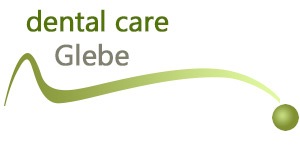What is Sedation Dentistry?

A significant proportion of the child and adult population exhibit a recognisable fear of the dentist.
Dental care Glebe offers nitrous oxide (“happy gas”) as well as intravenous sedation for nervous patients, enabling them to have any type of dental treatment while they are completely relaxed.
Patient’s are later comforted in a recovery area until they are ready to be taken home.
Sedation dentistry is used to provide a relaxing and anxiety-free experience for certain people receiving dental treatment. It enables individuals too afraid to go to the dentist to receive the dental care they need while avoiding the common apprehension known as dental phobia.
Why choose Sedation Dentistry?
According to DOCS Education, 30 percent of the population avoids the dentist due to fear. This all-too-common “dental phobia” prevents people from receiving necessary routine dental care, potentially compromising the health and functionality of the mouth and smile.
How does it Work?
Sedative drugs (tranquillizers, depressants, anti-anxiety medications, nitrous oxide, etc.) can be administered in a variety of ways. In the past, intravenous (IV) sedation — sedatives delivered via intravenous injection to the hand or arm — was predominantly used to produce a sedated state for dental treatment.
Alternatives to traditional modalities such as inhalation (nitrous oxide or “laughing gas”) and intravenous sedation (IVs), that offer a “no needle” (meaning, “no IV” injection)” approach that many patients find more accommodating.
Best of all, the medications used create such a comfortable experience that most patients do not remember the visit; it is as if they slept through the treatment. In reality, oral sedation dentistry maintains a level of consciousness in the patient for safety and cooperation.
Note: Sedation is different from anesthetic injections. Although some forms of sedation (such as nitrous oxide gas) may raise an individual’s threshold for pain, most dental treatments will still require the use of a local anesthetic in the mouth that will be administered via injection, even when sedation dentistry techniques are performed. This local anesthetic will temporarily block pain impulses from the affected teeth/gum tissue. However, this injection will occur after the patient is already sedated and comfortable, so he/she most likely won’t be bothered by or remember the sensation of having the injection.
Regardless of the type of sedation dentistry you receive, it is important to have a responsible caregiver accompany you to the procedure (and drive you there if you must take oral medication before arriving for your appointment), drive you home after the procedure is complete and stay with you for an additional two to four hours at home.
Benefits of Sedation Dentistry
One of the major benefits of sedation dentistry is that people often feel like their dental procedure lasts only a few minutes, when in fact it might have taken hours to perform. Therefore, complex dental procedures that normally require multiple visits can often be performed in fewer appointments.
Also, because sedation dentistry addresses some of the fears that keep people from going to the dentist on a regular basis, sedation dentistry patients are more likely to receive recommended routine care. As a result, they are less likely to neglect their oral health problems to build to the point when drastic dental treatments become necessary.



 Click here to watch video
Click here to watch video